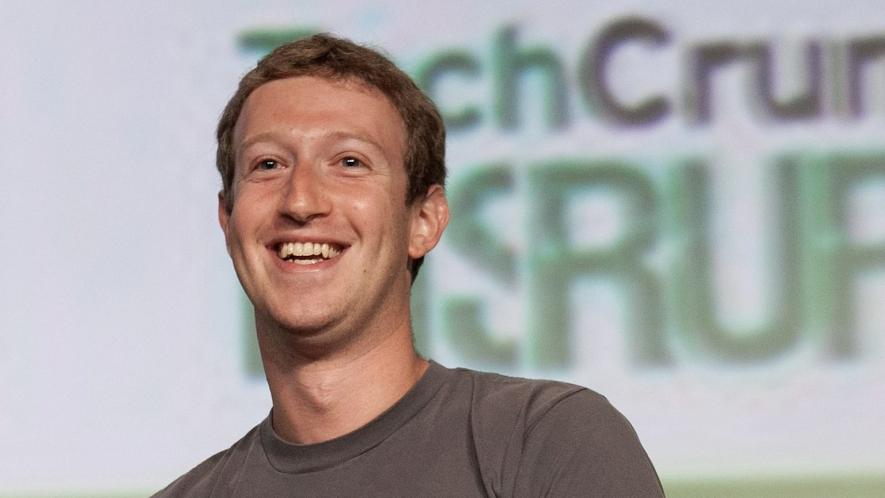‘This is Class War’: Tech Companies and US Fed Oversee Major Job Losses

Mark Zuckerberg CEO of Meta. Photo: Wikimedia
On Tuesday, March 14, Facebook’s parent company Meta Platforms, Inc. announced plans to cut 10,000 jobs. Terming 2023 the “year of efficiency,” the company also decided to discard plans to hire for 5,000 job openings, scrap “lower-priority” projects, and “flatten” the organization. This is after it already got rid of certain middle management positions earlier this year.
This is the second major round of layoffs by Meta, which had cut 11,000 jobs, or 13% of its workforce, in November 2022. Meta is not alone. Since 2022, tech companies have laid off an estimated over 290,000 workers. And another aggressive wave of cuts is now looming.
Among the reasons cited by CEO Mark Zuckerberg for Meta’s decision were “higher interest rates” and a “cooling economy.” So what has caused this dramatic shift?
The boom-bust cycle continues
“With the onset of the COVID-19 pandemic and the lockdowns, the entire digital space saw a boom in revenue as people became more reliant on online retail. All of this operates on a kind of hyped, herd mentality—as soon as companies like Amazon, Google, and Facebook saw an increase in revenue, it was immediately thought of as a permanent condition, that people would shift to the online world,” Bappaditya Sinha, a technology analyst and writer, told Peoples Dispatch.
“Now while there was a real growth in revenues, coupled with the hype that these tech companies were basically going to take over, the US Federal Reserve (the Fed) also carried out massive amounts of quantitative easing [printing more money], basically increasing the supply of money. All of this resulted in a major increase in the valuations of tech companies across the spectrum.”
Bigger revenues, increased market capitalization, and the belief in this anticipated, permanent condition of growth resulted in a massive hiring boom. Meta’s workforce, for instance, grew by 30% in 2020 and 23% in 2021.
However, things began to change in the beginning of 2022. By March, inflation had hit 8.5%. “It was then that the Fed decided that it was time to tighten the money supply, so they started increasing interest rates very rapidly,” Sinha explained. “Within a span of a year, the interest rate has gone from [near] zero to close to 5%, which is unprecedented. The Fed also stopped quantitative easing, opting instead for a quantitative tightening.”
“The first companies to get hit by this were the most speculative, those who did not have any viable profits. You then have cryptocurrencies going bankrupt and companies shutting down.”
Also watch: The year Big Tech was on the ropes
For Big Tech, it was becoming clear that the kind of growth seen during the pandemic, and this projection of everyone moving online was actually a one-time thing, Sinha added. The market capitalization of big corporations came crashing down, with Alphabet Inc., the parent company of Google, losing nearly USD 800 billion, Microsoft losing some USD 726 billion, and Meta Platforms having lost USD 450 billion.
“However, while growth rates were slowing, by no means were revenues contracting,” Sinha said. Meanwhile, corporations decided that it was time to cut jobs. In January 2023, Alphabet Inc. announced that it would cut 12,000 jobs worldwide—6% of its workforce.
The same month, Microsoft also announced plans to layoff 10,000 people by the end of the third quarter of the 2023 financial year, with a third round of job cuts implemented this week.
Mega corporations outside the tech sector are also on a similar path, with Amazon planning to cut over 18,000 jobs. Meanwhile, social media company Twitter has laid off about 10% of its workforce, or 200 people, after terminating 3,700 jobs in November 2022.
“Some of this is also due to the same herd mentality—now that market caps have fallen and companies have gone bankrupt, there are these mass layoffs,” Sinha said.
“A lot of this is also driven by Wall Street. When these market caps were going up for no reason other than hype, these corporations were playing to the gallery, talking about this dramatic growth. And now that the reverse is happening, with market caps going down, these companies have decided that even if the growth is not that much, they are still going to keep their profit margins high by cutting down the workforce.”
“Wall Street wants it both ways—when the hype is on and these companies hire workers, Wall Street applauds this. When the market caps are going down, then these companies want to show that they are cutting down costs so their profit margin remains high, and then Wall Street rewards this.”
Since Meta announced its “restructuring” in November, the prices of its shares have actually gone up.
“There is this very short-sighted firing and laying off this is kind of driven by what Wall Street’s perceptions are at any given point. These perceptions are very erratic, also due to the underlying Federal policy—the Fed decreases the money supply due to high inflation, this is reflected in the Wall Street mood, and companies basically comply with this.”
And who bears the brunt? The workers. While tech billionaires are rewarded by Wall Street, it is racialized workers, women, and immigrant workers on precarious work visas who are left in the lurch. For instance, around 40% of people who lost their jobs in the US were Indian-origin workers on H-1B visas, meaning they had only 60 days to find a job or be forced to leave the country.
As Patricia Gorky, a technology worker and organizer with the Party for Socialism and Liberation (PSL) in the US, has argued, “Layoffs are not just mass firings: They are mass eliminations of jobs… Layoffs are a way for capitalists to push the burden of the economic crisis onto the workers instead of cutting into executive pay” and “a tool for capitalists to discipline the workforce and maintain profitability.”
Bailouts for the rich, layoffs for workers
“As of now, the economy is not in recession. But, what we are seeing is banks collapsing—the second and third largest failures in US history. With the Fed raising interest rates so rapidly, it has now started impacting the banking sector. If the banking sector becomes conservative, if there is a risk perception, banks will stop lending and then what will happen is that the economy as a whole will go into recession,” Sinha said.
“If the economy does go into recession, it is possible that the stock market and these companies, whose revenues have so far not gone down even if the rate of growth has decreased, will be hit. And if that happens, then we will see major job cuts.”
Some signs are already there—the tech sector alone accounted for one-third of the over 180,000 jobs cuts announced by US companies in January and February, the highest since 2009.
On March 7, Fed Chair Jerome Powell appeared before the Senate, Banking, Housing, and Urban Affairs Committee, warning that the central bank might have to hike interest rates even further due to high levels of inflation and labor shortages. The Fed had already projected that the unemployment rate, which currently stands at 3.4%, could rise by one percentage point, or two million jobs, by the end of 2023 if interest rates were raised.
“Powell’s reaction was just ‘this is business as usual.’ Initially the inflation was seen in goods, and it was attributed to the lockdowns in China, then the war in Ukraine. Now, while the prices of goods have come down, the inflation has moved to the services sector,” Sinha said.
“What Powell is basically implying is that workers are earning more wages, and this is what is causing inflation. So what the Fed is going to do is to increase the interest rate and tighten the money supply. This in turn will result in companies laying off workers. Workers’ wages will not rise.”
“For them, increasing unemployment is almost natural. The Fed has historically said that the ‘natural’ unemployment rate of the US economy is 4.5%. How is this natural? It is a very political decision, which is made out to be a technical matter.”
Sinha emphasized that “It is presented almost like a mathematical axiom but it is actually class war. If you do not have 4.5% of the workers in the reserve army of labor, if you have less than that percentage of idle workers, then the workers have a greater bargaining power, they can demand higher wages. To ensure that does not happen, you have to keep a percentage of the population idle.”
“The Fed takes this position and then you contrast it with what happens when a bank collapses. Silicon Valley Bank was not a bank that caters to working class or poor people, it is where VC companies and their founders parked their money and the moment that bank collapses you have the rich getting affected, and it is because of the Fed’s policies—ultimately the bank was putting the money in Treasury bonds.”
“You can see the class politics—when policies affect the poor and the working class, it is considered ‘normal’, but when they start affecting the rich then it is a catastrophe that must be averted.”
Also read: Yes, the US gov’t did bailout the banks. What would a people’s bailout look like?
Get the latest reports & analysis with people's perspective on Protests, movements & deep analytical videos, discussions of the current affairs in your Telegram app. Subscribe to NewsClick's Telegram channel & get Real-Time updates on stories, as they get published on our website.
























